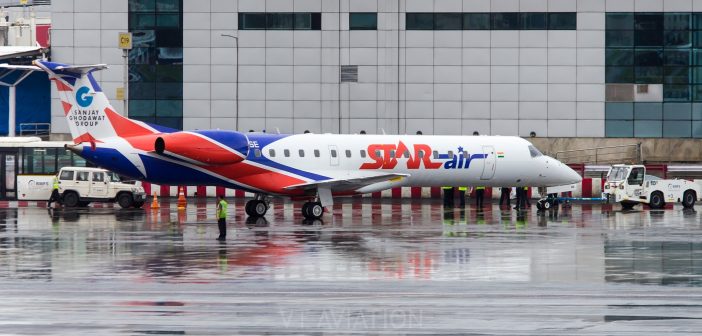In a significant development for regional aviation, Star Air, a promising player in India’s aviation sector, is set to transform Sambra Airport in Belagavi into a central hub for its expanding operations. This strategic move not only underscores Star Air’s ambitious growth plans but also marks a pivotal moment for Belagavi’s burgeoning status as an aviation hotspot.
Star Air’s Expansion: A Strategic Overview
Launched in 2019, Star Air has positioned itself as a key airline in the regional connectivity sector under the government’s UDAN (Ude Desh Ka Aam Naagrik) scheme, which aims to enhance air connectivity to underserved and remote areas. Initially, the airline focused on connecting smaller cities with major metropolitan centers, but its recent strategic decisions reflect a broader vision for growth and network expansion.
The decision to utilize Sambra Airport as a primary hub is a testament to Star Air’s forward-thinking approach. By consolidating its operations at this airport, the airline aims to streamline its services, enhance operational efficiency, and cater to a growing passenger base in the region.
Belagavi’s Aviation Growth: A New Dawn for Sambra Airport
Belagavi, a historically significant city in Karnataka, is witnessing a renaissance in its aviation landscape. Sambra Airport, located approximately 20 kilometers from Belagavi, has been gradually evolving from a regional airstrip into a significant airport poised for major growth.
Recent Developments and Infrastructure Upgrades
In recent years, the Karnataka State Government and the Airports Authority of India (AAI) have invested heavily in modernizing Sambra Airport’s infrastructure. These upgrades are pivotal in supporting the airport’s increased traffic and expanding its operational capacity. Key developments include:
- Runway Extension and Modernization: The runway at Sambra Airport has been extended to accommodate larger aircraft, thereby enhancing its ability to handle increased passenger and cargo traffic. The modernization includes upgrading runway lighting and navigation aids, which contribute to improved safety and operational efficiency.
- Terminal Expansion: The passenger terminal has undergone significant expansion to handle higher volumes of travelers. This expansion includes enhanced facilities such as modern check-in counters, baggage claim areas, and improved amenities for a more comfortable travel experience.
- Enhanced Connectivity: Improved road connectivity and transport links to and from the airport have been established, facilitating easier access for passengers. This infrastructure development is crucial in integrating the airport into the regional transportation network.
Economic and Regional Impact
The transformation of Sambra Airport into a hub for Star Air is set to yield multiple economic and social benefits for Belagavi and its surrounding regions.
- Boost to Local Economy: Increased air connectivity typically stimulates local economies by promoting tourism, encouraging business activities, and generating employment opportunities. The presence of a major airline hub can attract investments and foster economic development in the region.
- Enhanced Connectivity: For passengers in Belagavi and neighboring areas, the expanded air services offer greater convenience and accessibility. This is particularly beneficial for business travelers, students, and medical tourists who require frequent and reliable air travel options.
- Increased Tourism: With improved flight connections, Belagavi is likely to see a rise in tourist arrivals. The city’s historical sites, cultural heritage, and natural beauty are expected to attract more visitors, boosting the local hospitality and service industries.
Star Air’s Vision for the Future
Star Air’s choice to establish Sambra Airport as a hub is aligned with its broader strategic goals of expanding its route network and enhancing regional connectivity. The airline plans to increase the frequency of flights from Sambra to major cities across India, which will likely include both direct and connecting services.
Moreover, Star Air is focused on maintaining high operational standards and providing excellent customer service, which is critical for building and retaining a loyal passenger base. The airline’s commitment to leveraging advanced technology and adopting sustainable practices further supports its long-term growth strategy.
Conclusion
Star Air’s expansion and its decision to use Sambra Airport in Belagavi as a key operational hub represent a major milestone in the regional aviation sector. The strategic development of the airport, combined with Star Air’s growing network, is poised to elevate Belagavi’s status as an important aviation center in Karnataka.
This expansion not only highlights Star Air’s ambition but also underscores the broader trend of increasing investment in regional airports across India. As Sambra Airport continues to develop and expand, it will play a crucial role in connecting Belagavi to the rest of the country and contributing to the region’s economic and social growth.
The future of aviation in Belagavi looks promising, with Star Air’s plans setting a positive trajectory for the city’s continued development as a key player in India’s aviation landscape.





